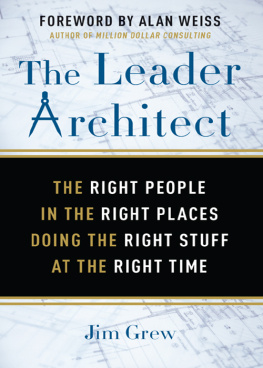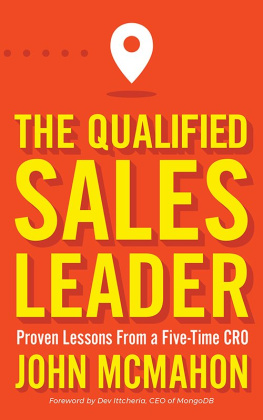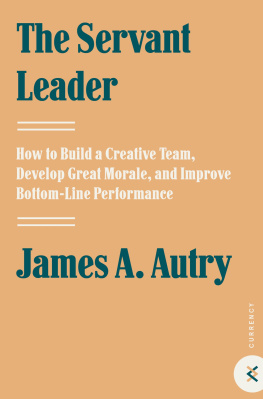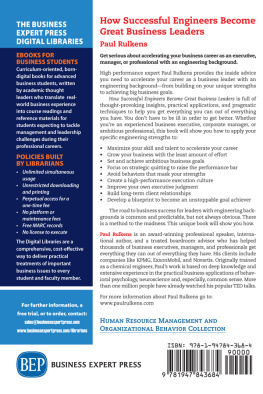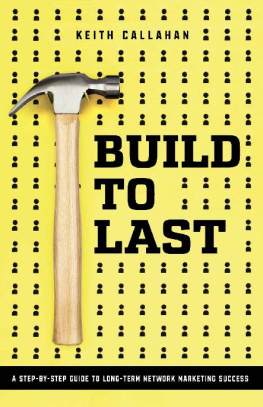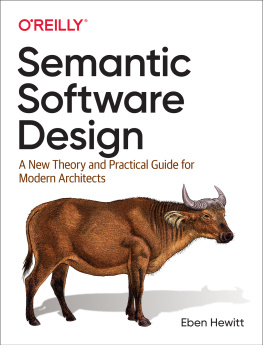
Praise for The Leader Architect:
If you lead people, keep this book on your desk. It will help you up your game quickly, with practical ideas that are easy to use.
Robert MacLellan, cofounder, Pacific Restaurants
Filled with useful applications of business theory, the book gives you numerous ways to continuously improve what you do. The LeaderArchitect is a terrific book for those looking for how to succeed with their business.
Norm Duffett, president, Orca Capital Securities, LLC
Utilizing an engaging mix of case studies, examples, anecdotes and how-to's, Jim Grew presents management strategies and tactics sure to propel any business to the next level.
Jason M. Brauser, partner, STOEL RIVES LLP
I've been involved in investing in over 100 startup companies and have participated on the boards of about fifty. Without exception every one of these companies would have benefited greatly from the insights presented in the very readable and understandable form in this exceptional book.
Elwood Howse, cofounder, Cable & Howse Ventures
I could always determine if the plant was profitable just by walking through it. That gut report doesn't translate well to managers, as talented and insightful as they may be. What they found indispensable was Jim Grew's concept of a scoreboard.
Don Jones, chairman and cofounder, JVNW Inc.
Jim Grew's unique insights will help to not only empower teams, but also turn executives into leaders.
Scott Showalter, president and CEO, Oregon Symphony
The Leader Architect is the proof of why Jim is called the Defogger and Accelerator. The chapter on Myths is a case in point. I told my clients that the practical advice in this chapter alone made the book my Christmas gift to them. Every page teems with pragmatic advice based on real world experience.
Jerry Fletcher, CEO, Z-axis Marketing, Inc
The impact of Jim's book on our business was immediate. His results-oriented approach and wisdom were just what we needed to get our company to the next level. Jim's insights and guidance were invaluable.
Hal Cranston, chairman and cofounder
Emerald Landscape Co. Inc.
Jim Grew is truly the Leader Architect by the way he lays out the structure and foundational principles necessary to be an effective leader. He has an uncanny ability to quickly drill down to the critical elements that help organizations hire and develop high-functioning players.
Don Bielen, Principal Perkins & Co.
Jim Grew has a great ability to listen and in listening he has acquired a great insight to how people and organizations work. Because of his experience in The Leader Architect he shows that there is a wide array of definitions of success and sets his solutions in the context of the client's definition.
David Williams, retired CEO, ShoreBank Pacific
The Leader Architect makes available to business owners like me the performance metrics and management efficiencies that Jim used to help us to significantly grow the profitability of our construction group.
Bill Mascott, owner, Mascott Equipment Co.
Small- to medium-sized business leaders are trapped by the countless constraints inherent in running small enterprises. The LeaderArchitect addresses these constraints and provides new insights, new ways of thinking and a new perspective on what is otherwise well-travelled ideas providing a key to break free of the trap leaders find themselves in.
David DeMots, CEO, Package Containers, Inc.,
CEO, DHX Advertising, Inc.
Jim Grew's book is a blueprint of how to understand, delegate and motivate the people in your organization. By understanding this blueprint, you can become your own leader architect.
Laura Markee, founder and president, Markee Valuations

This edition first published in 2018 by
Career Press, an imprint of Red Wheel/Weiser, LLC
With offices at:
65 Parker Street, Suite 7
Newburyport, MA 01950
www.redwheelweiser.com
www.careerpress.com
Copyright 2018 by Jim Grew
Foreword copyright 2018 by Alan Weiss
All rights reserved. No part of this publication may be
reproduced or transmitted in any form or by any means,
electronic or mechanical, including photocopying,
recording, or by any information storage and retrieval
system, without permission in writing from Red Wheel/
Weiser, LLC. Reviewers may quote brief passages.
ISBN: 978-1-63265-133-4
Library of Congress Cataloging-in-Publication Data
available upon request.
Cover design by Ty Nowicki
Interior by Lauren Manoy
Typeset in Optima and D-DIN Condensed
Printed in Canada
MAR
10 9 8 7 6 5 4 3 2 1
www.redwheelweiser.com/newsletter
Contents
Foreword
S mall- to medium-sized enterprises (SMEs) generate all100 percentof net new jobs in North America. Counterintuitively, perhaps, large firms do not. They mostly either merely replace existing jobs, or they reduce jobs through automation and outsourcing overseas. IBM, Boeing, Microsoft, and 3M are not producing new jobs and new employment.
But those businesses on Main Street, in the suburban malls, and on the exurban campuses, are. These firms are often closely held, and some are in the same families for decades. Some are start-ups with stars in their eyes. Some are franchises and local outlets.
All of them require a particular kind of care and feeding because they can't afford to make major errors; a small business could be sunk by a half-million-dollar mistake, whereas the likes of a Prudential or Pfizer would hardly notice a ten-million-dollar mistake. Family dynamicsfrom cousins on the payroll to children who need a college fundplay a role in investment far different from the considerations of a senior manager at Hewlett-Packard or Merck.
Small doesn't mean easy. There are fewer resources, more intense competition, greater technological issues, and, most of all, far greater challenges with people, from motivation to retention, from lack of opportunity to poor performance. As a consultant for more than thirty years, I've found that smaller businesses have greater challenges than their larger cousins, with a far shorter life expectancy.
Thus it's more than refreshingit's salvationthat Jim Grew, one of the foremost authorities on SME performance and profit in the country, has found the time to record his insights, experiences, and resultant advice in The Leader Architect. I know of no other work that comprehensively and authoritatively examines the professional and personal challenges of leading a successful small business in these volatile times.
Read this wonderful book carefully. This architect sheds light on your surroundings, constructs a solid foundation, and enables you to enjoy the house you're building every day.
Alan Weiss, PhD
Author, Million Dollar Consulting, Threescore and More, and more than sixty other books
Introduction
T his book is the reverse of most business leadership or management books. Instead of exploring the depths of particular theories and structures for success, this book bridges the chasm between what to do and how to do it for senior business executives. It offers ample theoretical foundations for the key management and leadership tasks these executives face, but provides clear and specific guidance about how and when to apply these powerful theories. It is especially for owners and CEOs, whose task is to lead successful growth in the face of a blizzard of advice. For simplicity, we'll use leadership for both leadership and management.
Next page
